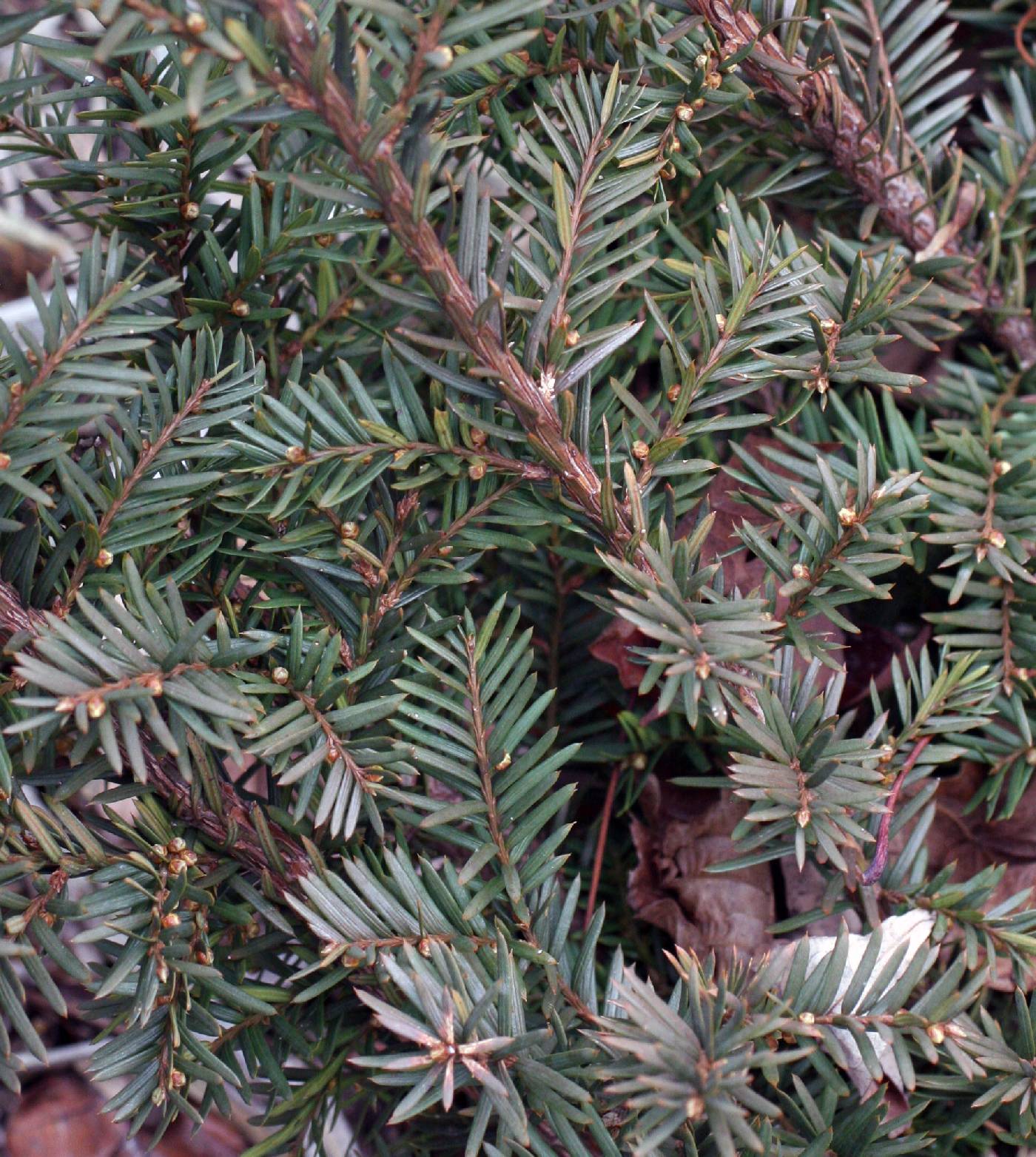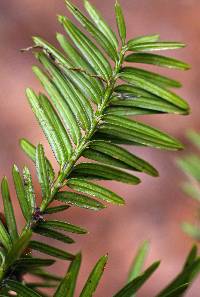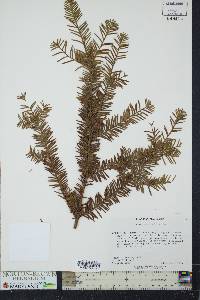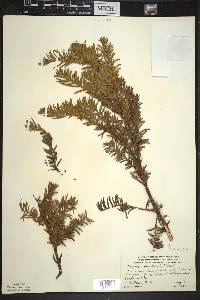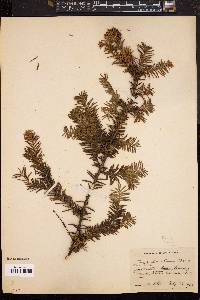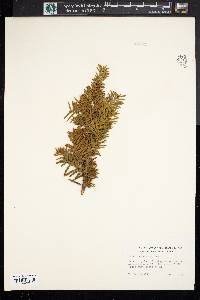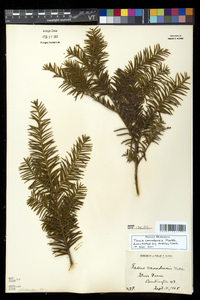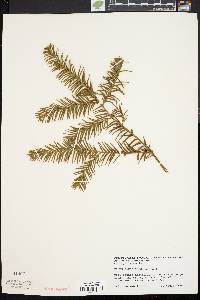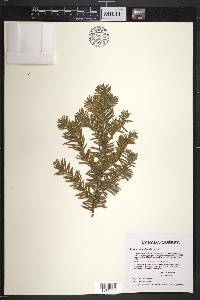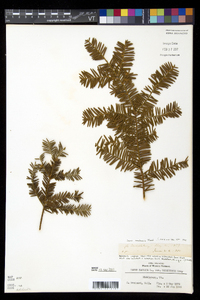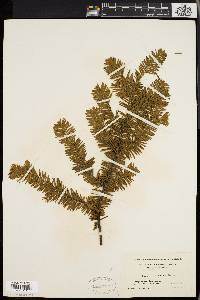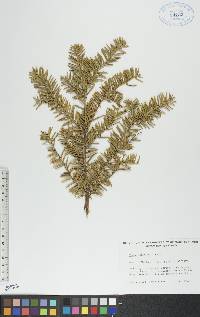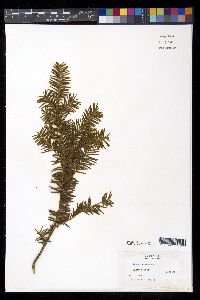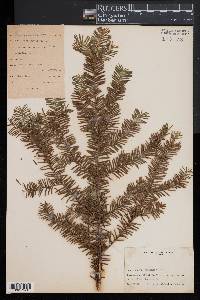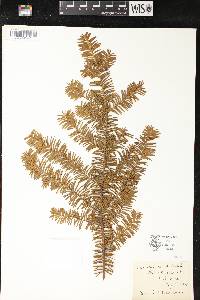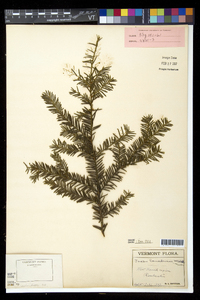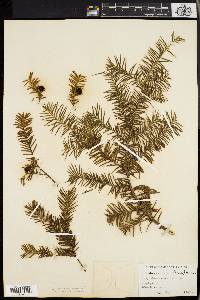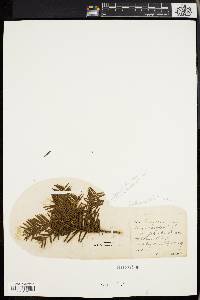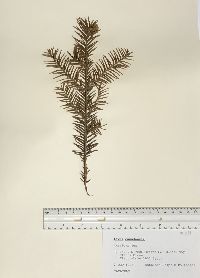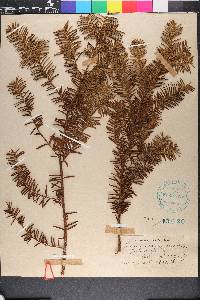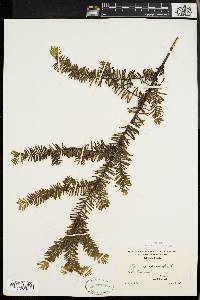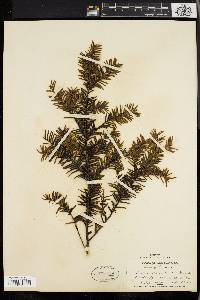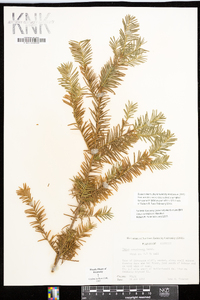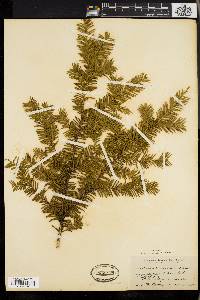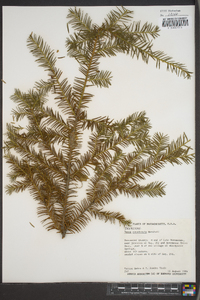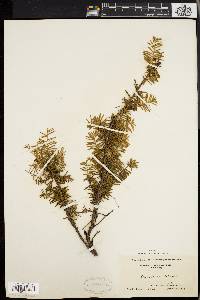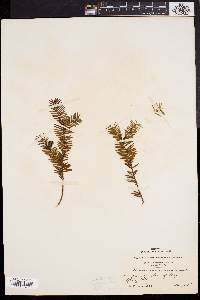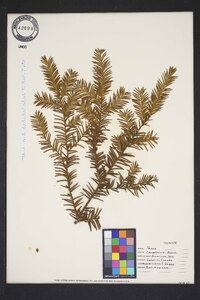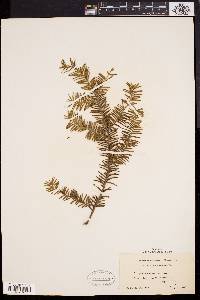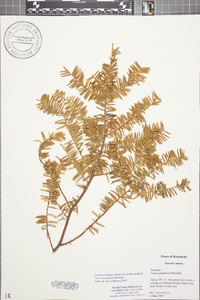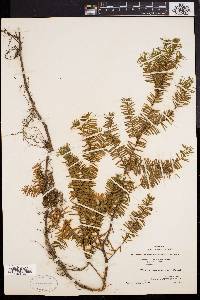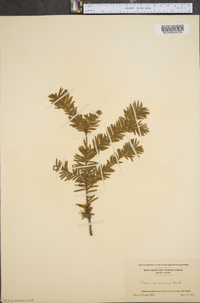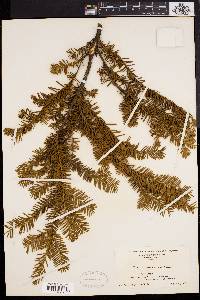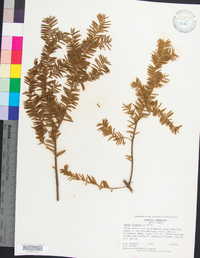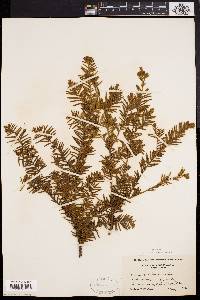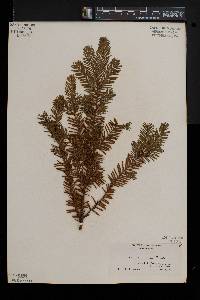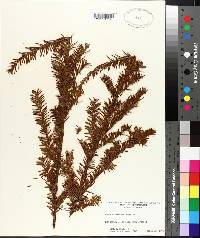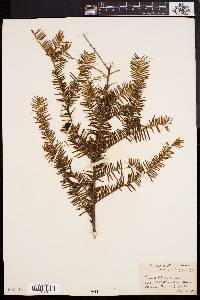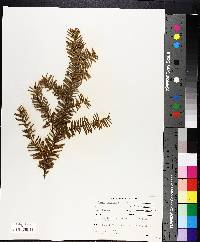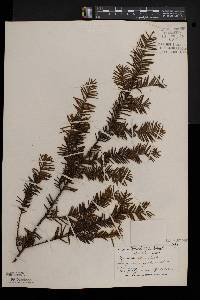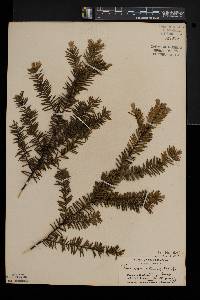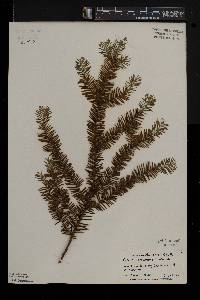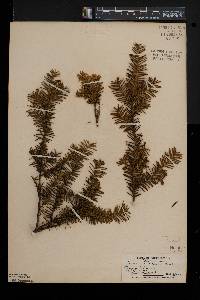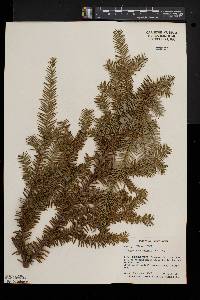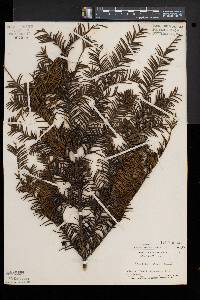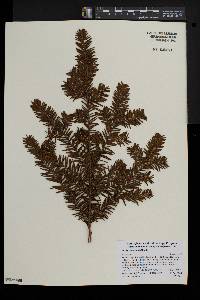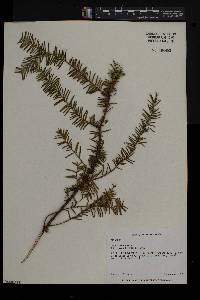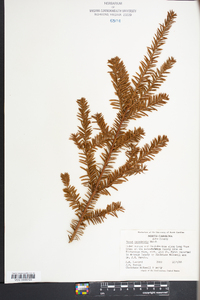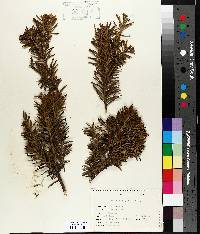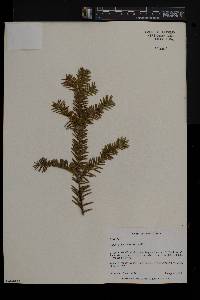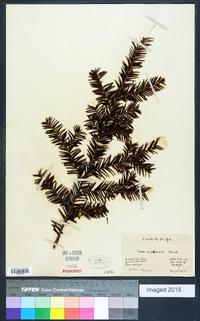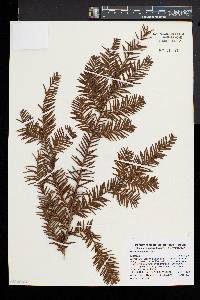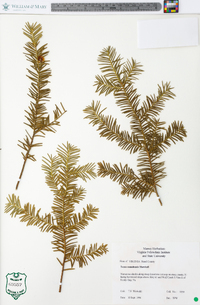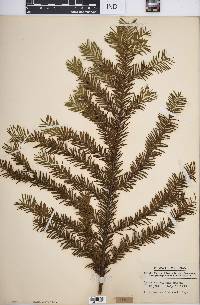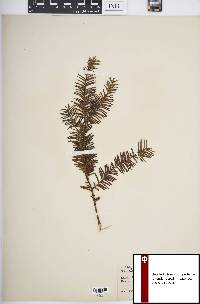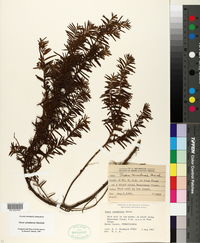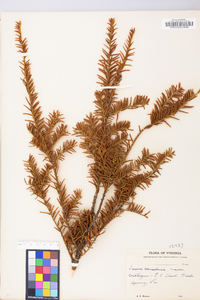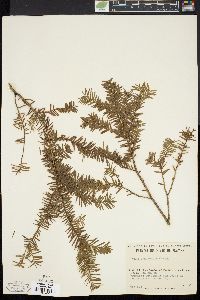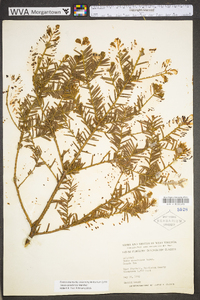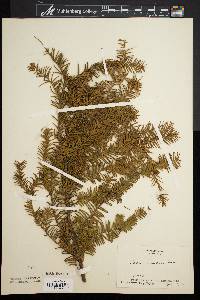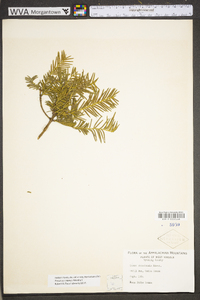
|
|
|
|
Family: Taxaceae
American Yew, more...Canada yew
[Taxus baccata var. canadensis (Marshall) A.Gray] |
Shrubs to 2 m, usually monoecious, low, diffusely branched, straggling, spreading to prostrate. Bark reddish, very thin. Branches spreading and ascending. Leaves 1--2.5 cm ´ 1--2.4 mm, pale green abaxially, mostly without cuticular papillae along stomatal bands, dark green to yellow-green adaxially, epidermal cells as viewed in cross section of leaf wider than tall or ± isodiametric. Seed somewhat flattened, 4--5 mm. 2 n = 24. Seeds maturing late summer--early fall. Understory shrub in rich forests (deciduous, mixed, or coniferous), bogs, swamps, gorges, ravine slopes, and rocky banks; 0--1500 m; St. Pierre and Miquelon; Man., N.B., Nfld., N.S., Ont., P.E.I., Que.; Conn., Ill., Ind., Iowa, Ky., Maine, Mass., Mich., Minn., N.H., N.Y., Ohio, Pa., R.I., Tenn., Vt., Va., W.Va., Wis. Shrub to 2 m tall, spreading to 4 m Leaves: very short-stalked, shiny dark green above, pale green with 2 bluish green lines (stomatal bands) beneath, 1 - 2 cm long, 1 - 2 mm wide, linear with a short-pointed tip. Leaves turn slightly reddish in winter. Bark: reddish and thin. Buds: with longitudinally ridged scales. Form: spreading to prostrate, loose and straggly with ascending branches, usually lacking a central stem. Pollen cones: yellowish, tiny, spherical. Seed cones: berry-like, composed of one naked seed surrounded by a fleshy appendage (aril). The aril is light red, soft, cup-shaped and open at the top to expose the seed. Seed brown, 4 - 5 mm long, slightly wider than long, somewhat flattened. Pollination occurs in spring. Similar species: Yew species can be very difficult to distinguish. Taxus canadensis is the only naturally occurring yew in the Chicago Region. Other yews are commonly grown in the landscape, and sometimes escape. Taxus cuspidata has slightly wider leaves than T. canadensis, and Taxus baccata has obscure midveins on its blunt bud scales. Habitat and ecology: Local in Barrien County. One specimen was collected in Lake County, IL in 1878, but no longer appears to exist. A population in Kankakee County has not been seen in over 100 years. In general, the species prefers moist sandy loam soil, requires shade in winter, and is not heat or drought tolerant. Occurence in the Chicago region: native Notes: The entire plant, including the seed, is very toxic except for the fleshy aril. Etymology: Taxus is the Greek and Latin name for the trees and shrubs in this genus. Canadensis means "from Canada." Author: The Morton Arboretum Straggling shrub with ascending or rarely erect stems to 2 m; lvs 1-2 cm נ1-2 mm, abruptly narrowed to a sharp point, attached by the shortly petiolar base to a decurrent sterigma on the twig; scales of winter-buds keeled, ±acute; fleshy seed ca 5 mm; 2n=24. Coniferous woods and bogs; Nf. and Lab. to Minn. and se. Man., s. to Va., Ky., and Io. Gleason, Henry A. & Cronquist, Arthur J. 1991. Manual of vascular plants of northeastern United States and adjacent Canada. lxxv + 910 pp. ©The New York Botanical Garden. All rights reserved. Used by permission. From Flora of Indiana (1940) by Charles C. Deam This species is local and is restricted to the sides of the steep slopes and cliffs along Sugar Creek in Turkey Run State Park, Parke County, to like habitats along Sugar Creek in the "Shades" in Montgomery County, and along Big Walnut Creek about 3 miles northeast of Bainbridge, Putnam County. It is usually found under hemlock. …… Indiana Coefficient of Conservatism: C = 10 Wetland Indicator Status: FACU |

